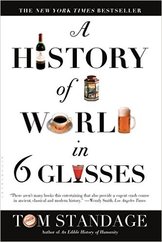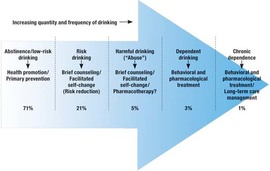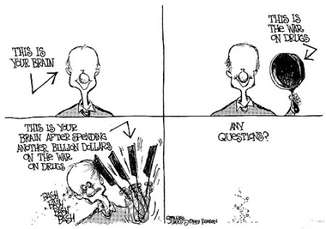|
Welcome back, and thank you for your comments on my first installment in this series of posts about harm reduction! This week, we'll take a look at the larger historical context of our belief systems concerning psychoactive substances and their misuse.
The United States, in particular, has always struggled with a highly conflicted set of attitudes regarding drinking. The Puritanical roots of the colonial people, and later temperance organizations, had a hand in shaping the MORAL MODEL, seen in the 19th and early 20th centuries. This model can be characterized by these beliefs:
This was gradually (and perhaps only partially) replaced by the DISEASE MODEL, which has been viewed as our standard approach since the inception of Alcoholics Anonymous in 1935. The precepts of this model are:
In contrast, the HARM REDUCTION MODEL of substance misuse holds that:
* For example, Miller & Hester’s review of the literature on outcome studies regarding the efficacy of methods for treating alcoholism (from 1980 through 2002) concluded that, in the year following a treatment episode: - 1 in 4 remained continuously abstinent - 1 in 10 drank moderately and without problems - Mortality during this period averaged less than 2% - Even clients who DID drink in the year following treatment showed substantial improvement, abstaining on three out of four days, and reducing their overall alcohol consumption by 87% on average, with a 60% reduction in alcohol-related problems.
0 Comments
The remarkable progress made this year towards ending our disastrous war on drugs make this an optimal time to define and discuss the concept of harm reduction*.
So what IS harm reduction, and how did it begin?
Though we can trace its roots back for several decades, harm reduction largely became visible in the 1980s as an international public health movement that recognized HIV as a larger health risk than drug use in and of itself, and aimed to reduce transmission via the distribution of condoms and clean needles. The primary principles of this health movement are an acceptance of the reality that people DO engage in high-risk behaviors, and a commitment to helping them reduce the harm associated with those behaviors, without requiring that the behaviors themselves stop. Out of these principles grow many of our well-known public safety regulations and health education programs, such as seat belt and helmet laws, minimum drinking age requirements, nicotine replacements, safer sex practices, and designated driver programs. General Philosophy Harm Reduction is a pragmatic stance, rather than one based in moral idealism, and is grounded in scientific research, human rights, compassion, and common sense. It is consumer-oriented, maintaining a low threshold for participation; providers are committed to meeting people where they ARE, rather than requiring abstinence before treatment begins. It is collaborative, rather than punitive; people are encouraged to participate in setting their own goals for treatment, and to work together with their providers towards those goals. This stance represents a major shift in how we approach individuals with high-risk behaviors, opening the doors of treatment to many more people than ever before. That's it for today--stay tuned for Part II: Moving from Away From the Moral and Disease Models! * Much of the information in these posts and my practice was gleaned not only from the excellent book Over the Influence: The Harm Reduction Guide for Managing Drugs and Alcohol, but also via live trainings with Patt Denning, Ph.D., one of the authors. For those seeking further reading in this topic, I can not recommend this book highly enough. |
Jessica Katzman, Psy.D.I'm a psychologist with a private practice in San Francisco's Castro District. I'm interested in harm reduction, LGBTQQIAAP issues, psychedelic integration, social justice conversations, size acceptance, and any intersections of the above. I welcome your comments! Categories
All
Archives
June 2020
Disclaimer: The information and resources contained on this website are for informational purposes only and are not intended to assess, diagnose, or treat any medical and/or mental health disease or condition. The use of this website does not imply nor establish any type of therapist-client relationship. Furthermore, the information obtained from this site should not be considered a substitute for a thorough medical and/or mental health evaluation by an appropriately credentialed and licensed professional. This website includes links to other websites for informational and reference purposes only. This website does not endorse, warrant or guarantee the products, services or information described or offered at these other websites. Examine the content carefully.
|




 RSS Feed
RSS Feed